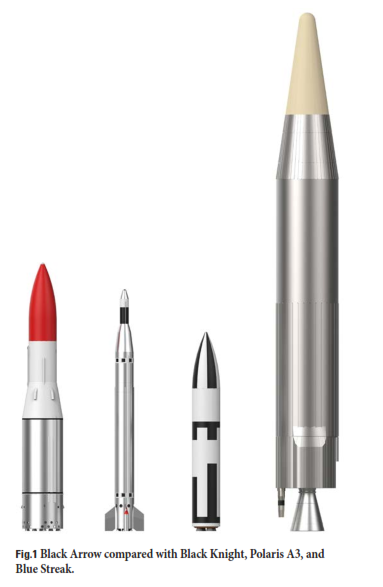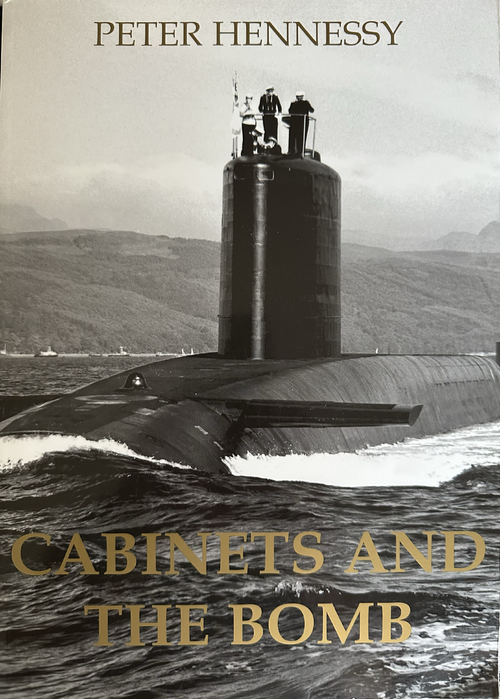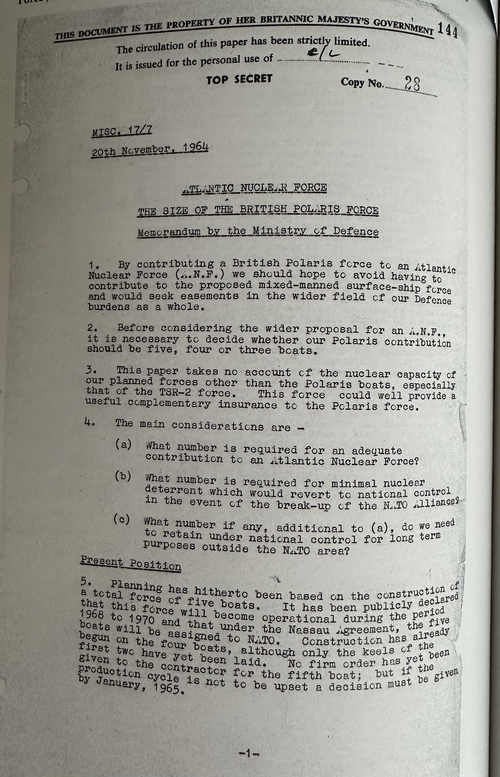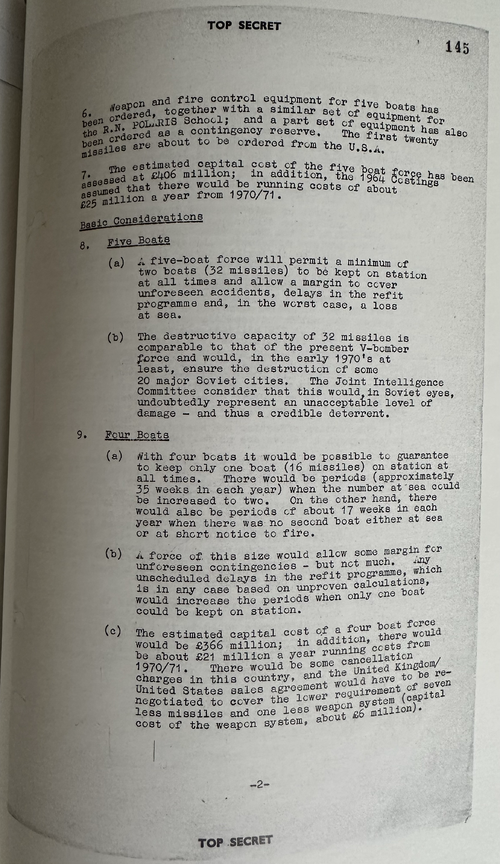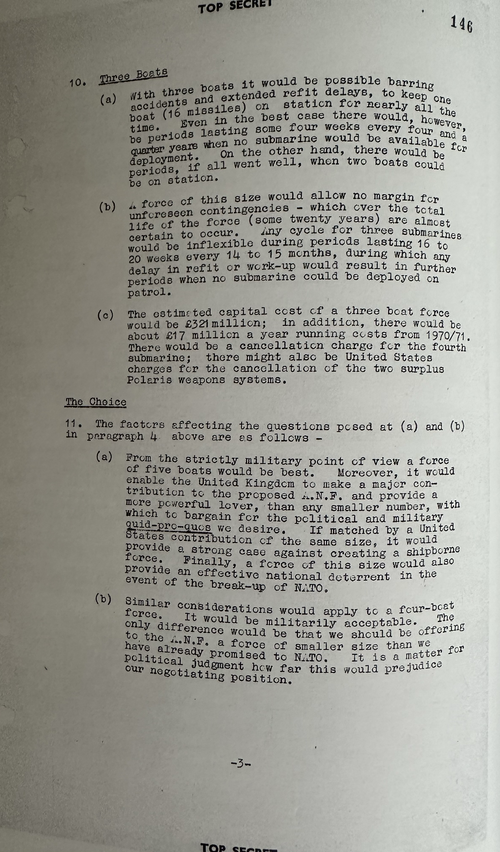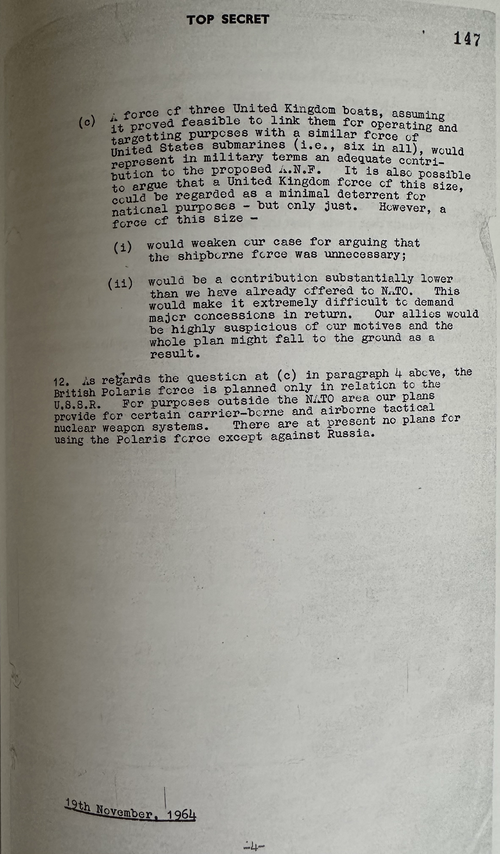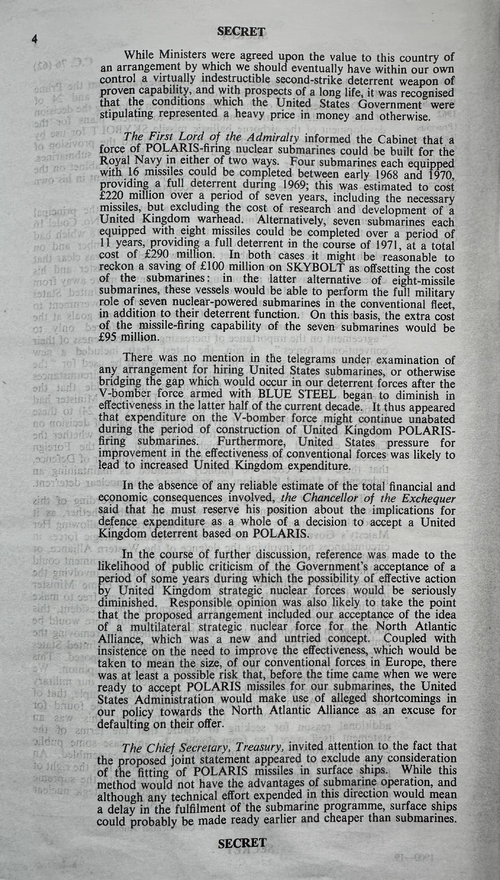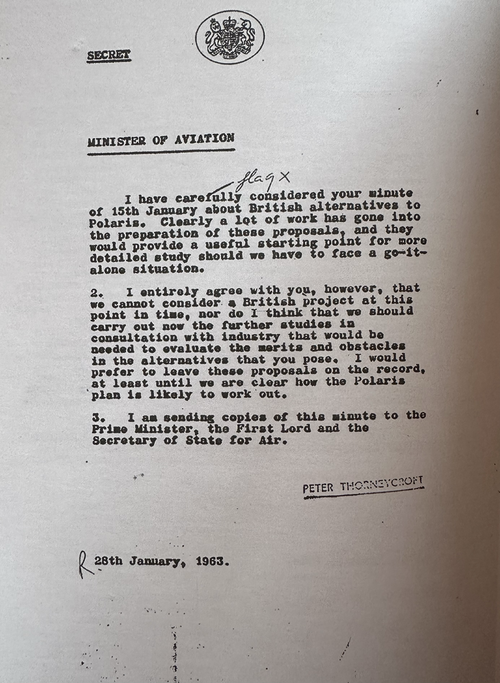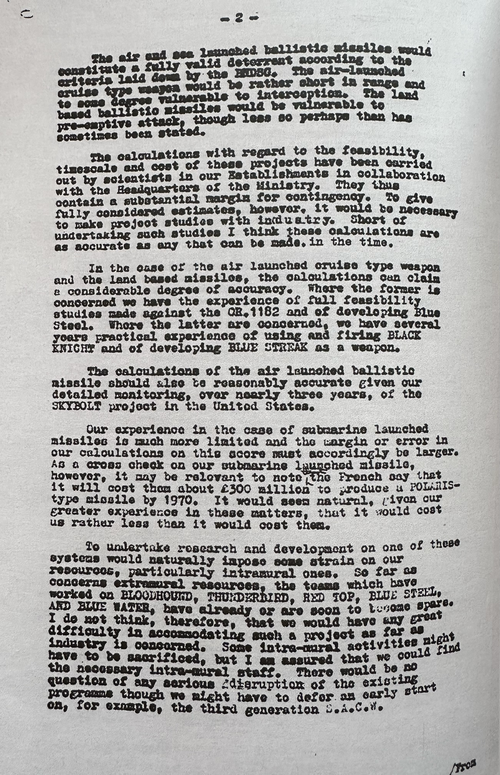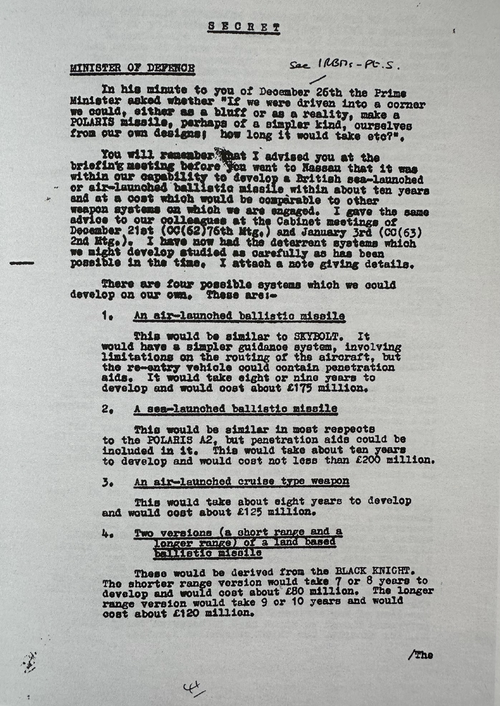That being written No. 2. There are occasions when I think . . . "What were they on!" Blue Streak is one because it's obvious that the USSR would develop its own ballistic missiles sooner or later. In defence of the people that made the decisions it was sooner than expected. However, hundreds of millions of Pounds worth of Blue Streaks would still become obsolete by 1970 even if the USSR had developed ballistic missiles later rather than sooner. Therefore, on this occasion the middleman should have been cut out and the powers that be gone straight for a SLBM or Blue Steel Mk 2 or a British analogue to Skybolt.
Blue Streak was rapidly overtaken and the silo idea, while good, was never politically sound.
The RN could see in 1959-60 that Blue Streak would never be as cost effective as Polaris, replacing Blue Streak would be equally as expensive (and would have had to fit the same siloes). The siloes were designed to withstand 1MT bursts within a certain distance, but were very much - like Polaris - a second strike weapon. And four (or five or six) SSBNs offered more survivability during the first exchange (assuming enough was left for anyone to care about a second exchange).
I can see why they did it and why the tech at that time forced the design they had, but I agree it was always sub-optimal. It a shame that ELDO was just a mess that no civilian use could be obtained to make some return on the programme.
I think perhaps the question is - should the UK, like the USA, USSR and France, have forked out the cash to keep a three or two-pronged nuclear force going?
That being written No. 3. It has been said that success breeds success. IOTL it was too often the opposite. Failure bread failure. I don't blame you for thinking some if it is too good to be true. I do sometimes. However, getting a few more things right first time in the period 1945-50 would have paid large dividends over the following decades.
I would agree, more lucky breaks might have made all the difference.
I don't like all of your comments, but I pay attention to them and despite the tone of some of my replies I appreciate them. As I've said in our private messages I feel like a five-year-old child playing with the big boys in this forum. People such as yourself are published authors and I'm only a low-level enthusiast. For what its worth I thank you and all the other proper historians who contribute to this forum for tolerating me.
Thankyou for your kind words, I tend to be sceptical sometimes but there is nothing personal. No AH is perfect, we'd all pick different things.
Just a weird idea; what about solving the Blue Streak basing issues by launching it from surfacs ship, moving in British home water?
I believe there might have been some early ideas along those lines. I've certainly seen a lot of what-if ships (like Vanguard with Blue Streaks etc.) over the years. I don't think its the right missile for that and given the range of Blue Streak you'd want the ship off the East Coast or in the Med and there it would be vulnerable to counter attack.
How accurate were they? How heavy were the accurate ones?
Because you need one on the submarine accurate enough to tell the missile where it's starting, and a second one on the missile to check.
Good questions. I don't know all those answers off the top of my head. The star trackers never got beyond prototypes. Aviation inertial seemed to go well though.

